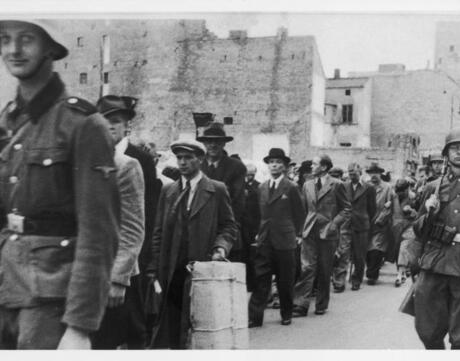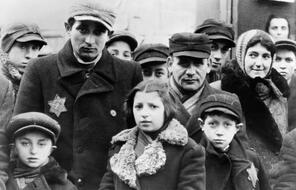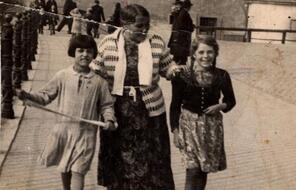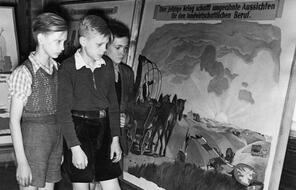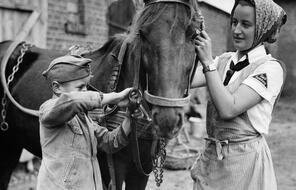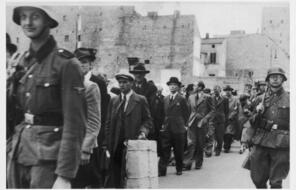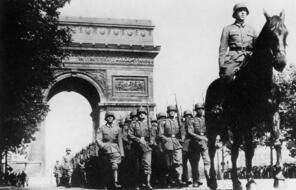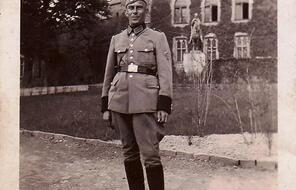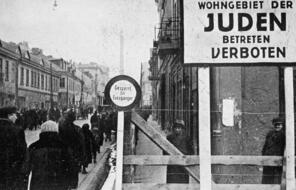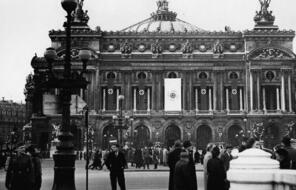Adolf Hitler believed that the driving force of history was a struggle between races, a struggle that would only end when the superior race—the Aryan race, in Hitler’s view—achieved supremacy over all of the other supposed races. Aryans were a mythical race from whom many Germans and other northern Europeans believed they had descended (see reading, Breeding Society’s "Fittest" in Chapter 2). Previous chapters have explored the Nazis’ racial ideology and the ways that many Germans embraced, or at least accepted, that worldview in the 1920s and 1930s. Chapter 7 also documented Germany’s annexation of Austria and the Sudetenland, with the goal of expanding the Reich and uniting ethnic Germans—people of German descent, sharing supposed “German blood”—into one nation. Emboldened by success in Austria and the Sudetenland, in 1939 the Nazis and many Germans were ready to fight for additional “living space” for their nation. Historian Doris Bergen writes, “For Hitler, these two notions of race and space were intertwined. Any race that was not expanding, he believed, was doomed to disappear. Without living space—land to produce food and raise new generations of soldiers and mothers—a race could not grow.”
Hitler believed that the quest for “living space” for the Aryan race would ultimately lead to war, a consequence he welcomed. He believed that war was inevitable until the racially fittest nation achieved complete supremacy.
The European war ignited by Germany’s invasion of Poland in 1939 soon combined with ongoing wars in Asia to create a truly global conflict, the largest and most destructive in human history. World War II was fought between the Allies—which included the United Kingdom, France, and eventually the Soviet Union and the United States—and the Axis powers, Germany, Italy, and Japan. Historians estimate that 55 million people died as a result of this war, a majority of whom were civilians. One country alone, the Soviet Union, suffered the deaths of more than 8 million soldiers and 14 million civilians.
The war ended with Germany’s defeat and surrender in May 1945 and Japan’s surrender, after the United States dropped two atomic bombs, in August of that year.
But in the early years of the war, Germany’s defeat was anything but certain. By December 1941, Germany had conquered most of mainland Europe, from France in the west to the outskirts of Moscow in the Soviet Union in the east. This conquest brought about what Hitler saw as a “New Order” in Europe. According to historian Peter Hayes, “Driven by two central principles—racism and economic exploitation—this New Order inflicted enormous violence and suffering on the subject populations, including even some Germans.”
The consequences of the New Order the Nazis imposed on Europe included enhanced national and racial pride for many Germans, both civilian and military, and material gains for German citizens in the form of cheap goods, as well as new jobs, homes, and land in conquered countries. For non-Germans, consequences of the Nazi plans for “race and space” were economic loss, horrible suffering, and the death of millions in the newly conquered territories who the Nazis believed could not be productive members of the Reich. These groups included mentally and physically disabled people, whose murder the Nazis justified as a necessity of war. They also included members of what the Nazis considered to be inferior races—such as Poles, Slavs, Roma, and Sinti—who were taken from their homes and often confined to camps and murdered, as well. And of course the Nazi “race and space” worldview involved special contempt for Jews, who were killed in increasing numbers as the war wore on. This chapter introduces the extensive network of ghettos and camps in eastern Europe in which the Nazis imprisoned, and eventually murdered, millions of people, including 6 million Jews. The next chapter examines these camps in more detail, as well as the mobile killing units that followed the German army’s eastward advance.
